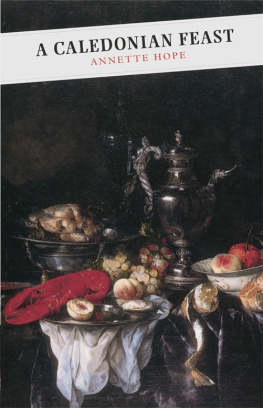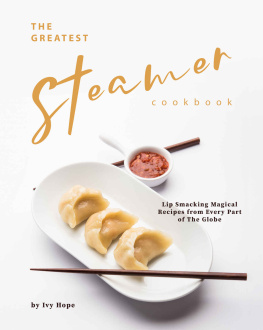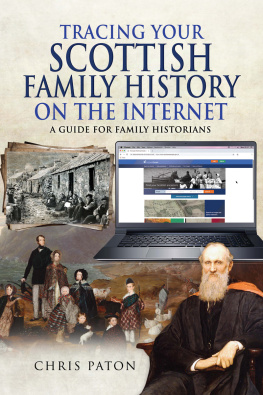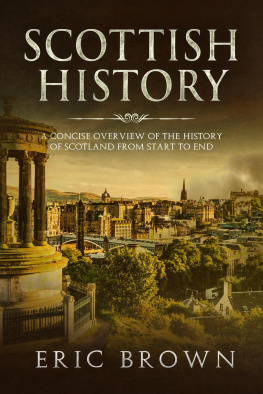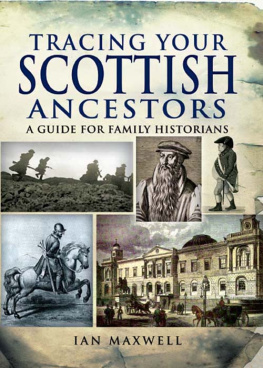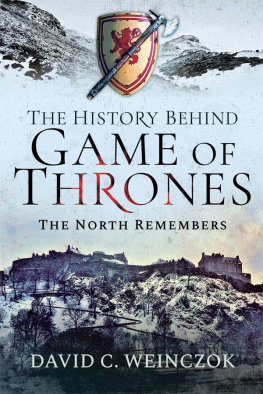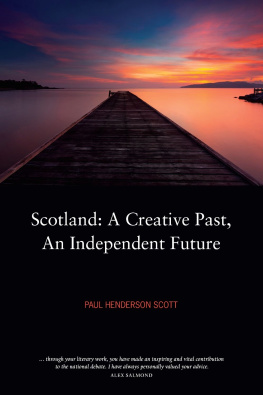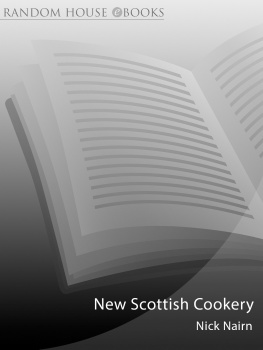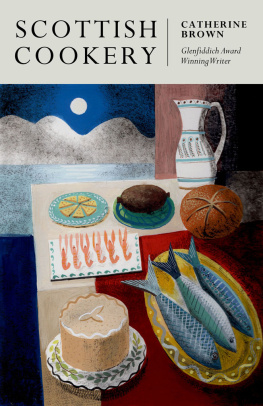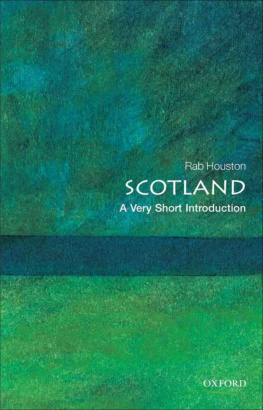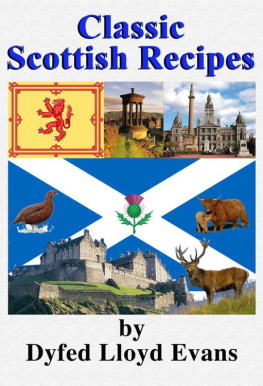I have the privilege of writing this Introduction because a few years ago I was chatting to the editor Judy Moir in my bookshop, and I happened to remark that it was a great tragedy that far and away the best book on Scottish culinary history was out of print. You can imagine, then, with what delight I pick up my pen, or rather my laptop, for this task.
A Caledonian Feast has a particular place in my affections for rather a strange reason. It was first published in 1987, the year I got sober when I (who all my life had read a book a day) found myself unable to find any interest in the written word and, worse still, in any work on food, my lifelong passion. The purple prose of Elizabeth David, the anecdotes of Jane Grigson, the wit of Alan Davidson, nothing could lift me. Then one day onto my desk came this book. My attention was immediately caught by the cover which bears the brilliant John Ainslie painting of Joseph Florence, cook to the fifth Duke of Buccleugh (I know of no other aristocratic family who paint their cook). So I started to read and I couldnt put it down for several hours. Thus was I restored to sanity and reading again.
Annette Hope is not a Scot by birth, she was born in Spain and spent her formative years abroad. At Edinburgh University she fell in love with Scotland, married here and worked as a librarian at Edinburgh University. Coming to Scots culinary history as an outsider has possibly been her strength, as she didnt bring with her the preconceived notions learnt at a grandmothers knee, but had to start afresh, investigating and questioning every belief of food hard-held by the native Scot. A particular example of this is her discussion of the oat in the Scots diet. When you read this book you will find that we have to blame Dr Johnson and Lord Elibank for the misconception that the Scot existed almost entirely on oatmeal rather than bere, barley, or even wheat. I love the picture, too, of the Highland soldier with his small metal plate on which to make his meal and water oatcake.
Another aspect of this book that appeals to me is that it is free of the class divide that drives so many writers on matters Scots: it is a scholarly work turning the spotlight of knowledge on Nor- man aristocrat, Highland keelie, Border farmer and urban dweller alike, with no inherited distaste for any of them. Many writers on Scots food are either obsessed with the grandeur of the Enlightenment or the squalid conditions of the poor. Food writers have a bad habit of researching their knowledge almost entirely from the works of other food writers so that the same facts are regurgitated time and again and the same mistakes proliferate. I have long held the view that the safest source of food history is to be found in the contemporary literature of the day, which will tell us, after all, what each generation eats, how we eat, where we buy it or produce it, and at what time we sit down to meals. Here the author meets my expectations time and again. I love the thought that Mary Queen of Scots dined at 11 a.m. whilst Lord Darnley preferred to dine at 2 p.m. that alone could explain why she ran off with Bothwell! Annette Hope is remarkably widely read. In her opening chapter, Food from the Wilderness, she draws not only on Buchan and Cummin- Smiths The Romance of Poaching but also the serious sporting writers of the relevant centuries a reference source not often found outside books on field-sports.
Annette is not loath to take a false belief and refute it with historical facts. For example she quotes the much-repeated con- demnation of Scots Stock farming by the Jacobite and improver William Mackintosh of Borlum writing from his prison cell. And she offers in counter-argument not only the endeavours of Sir David Dunbar of Baldoon (model for the hero in Walter Scotts The Bride ofLammermoor) who in 1680 had a herd of a thousand cattle, but also the stock weights of animals sold in Crieff market in the eighteenth century. This type of research, where it is found at all, is usually kept in books of such academic dryness that only the scholar or the pedant will read them. The joy of A Caledonian Feast is that, despite its wealth of literary and academic content, it is the most readable of books. On returning to it for the purposes of this Introduction I found myself praying for traffic jams so that I could continue reading it; and when immersed in the chapter on The Pleasant Art of Gardnery, I actually turned aside from the main road to sit quietly in a field entrance to continue reading. If I had to choose my favourite chapter it would be this latter.
I live in East Lothian and was riveted by the accounts of, and the correspondence between, vegetable and fruit growers in my area. I became quite angry to learn that the orchards of Haddington were famous as early as the thirteenth century when the only fruit you will find there now is imported for the supermarket shelves save for one brave fruit and veg shop which finds what local produce it can. I particularly cherish the account of the correspondence of John Cockburn to his gardener Charles Bell. Cockburn, son of a Law Lord and one of the first Scots MPs in the English parliament following the Act of Union, comes alive from the authors description:
Cockburn must have been an infinitely infuriating em- ployer. Himself possessing inextinguishable energy and a capacity for total commitment, he was blind to the need of others to remain their own imperfect selves. He could not leave people alone; his letters endlessly repeat admonition, advice, and complaint. He had firm ideas on every subject and though he professed open-mindedness, it always ended with his being sure that those who disagreed with him or refused to follow his advice would live to regret it.
This is the man who is trying to coerce that most indomitable pillar of tradition and resister of change a Scottish gardener! Scotland has long been regarded as a nation devoid of vegetables and living here one can see why, but it was not always thus. Edinburghs Tron Market was held twice a week and one becomes positively jealous of historic Glasgow. In eighteenth-century Glasgow the market offered a choice we dont find today and yet one thinks of Glaswegians as a town of vegetable-haters.
Early vegetables include potatoes, cabbage and turnips; yellow turnips; onions; leeks; savoys, German greens, Scots kail, celery, late cabbage, cauliflower, broccoli, peas, beans and asparagus all sold well. Parsley and the usual salads were quite popular but there was little demand for sea-kail, artichokes, beet, endive, French beans, garlic or shallots.
What price modernity now?
Rather curiously and charmingly for such a scholarly book, each section finishes with a number of recipes. My heart warms to a recipe writer who puts (or indeed whose publishers allow her to put) It is difficult to give quantities for this recipe, which is largely a matter of taste and personal judgement. These recipes, though useful and workable, do not to my mind transform the book into a cookery book. They are, however, a useful supplement. I was highly entertained to read that the author likens the Scotch egg to the Indian dish Nargisi Kofta, which suggestion is eagerly adopted by Alan Davidson in his Oxford Companion to Food I should love to know if the author has any basis other than hypothesis for this, given her excellent chapter on foreign food influences on Scottish cookery, as I would love to debate with her Craster versus Seahouses for the origin of the kipper. Still, maybe that chance may come. What is most entertaining about the recipe sections is the perhaps unrelated anecdotes that intersperse the recipes. For instance, on giving an account of herring in oatmeal she digresses to relate how the Wordsworths on visiting Scotland were troubled by the smell of herrings hanging in the rafters to dry!

